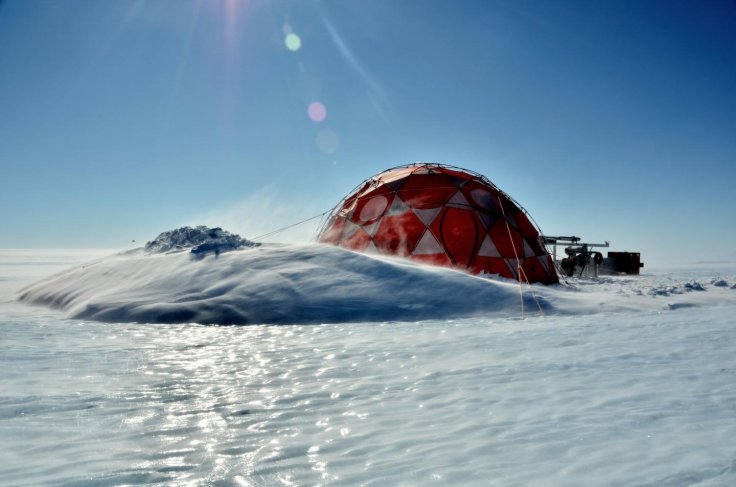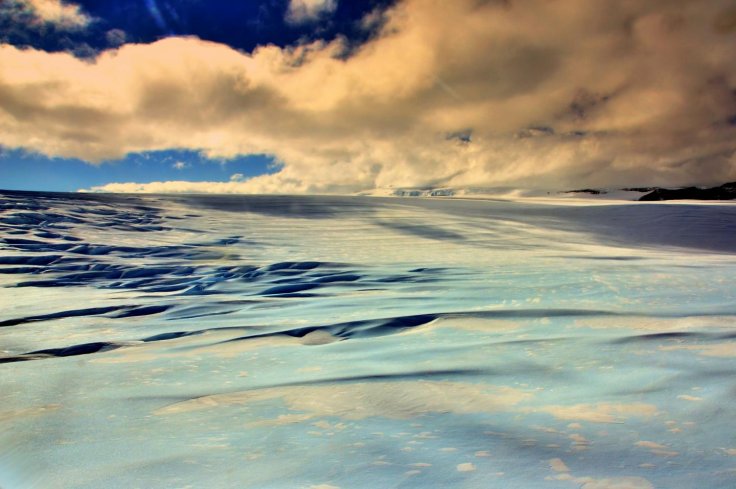Princeton University team has successfully extracted 2 million-year-old ice cores in the remote Allan Hills of Antarctica, which may provide clues to ancient weather or climate changes that might have affected test of the planet, forcing the inhabitants cover themselves with fur.
The cores with trapped gas bubbles ever contain pristine samples of carbon dioxide, methane and other gases that serve as "snapshots" of prehistoric atmospheric conditions and temperatures, said researchers in their article that was published in the journal Nature.
Ice cores extend back to 800,000 years ago
Since ice flows and compresses over time, continual ice cores only extend back to 800,000 years ago, the currently retrieved ice cores are like scenes collected from a very long movie that do not show the whole film, but provide clues to the overall plot, said first author Yuzhen Yan, who received his Ph.D. in geosciences from Princeton in 2019.
"You don't get a sense of how things changed continually, but you get an idea of big changes over time," said Yan. "The ability to measure atmospheric composition directly is one of the biggest advantages of ice cores. That's why people spend years and years in the most isolated places getting them."

Past studies on ice cores
Earlier, a team led by John Higgins, a Princeton associate professor of geosciences, recovered a 1 million-year-old ice core from the Allan Hills, which was the oldest ice core ever recorded by scientists when it was reported in the journal Proceedings of the National Academy of Sciences in 2015. The cores were dated by measuring isotopes of the gas argon trapped in bubbles in the ice, a technique developed by co-author Michael Bender, another Princeton professor emeritus.
New answers to age-old questions
The data from these cores will provide an answer to long-held questions about how our current glacial cycle emerged. About 1.2 million years ago, Earth's ice ages consisted of thinner, smaller glaciers that came and went every 40,000 years on average. After this Mid-Pleistocene Transition, there emerged our current world of colder and longer glacial cycles of 100,000 years, known as the 40k and 100k world, respectively.

Opens up new array of climate study
The ice core also opens up an array of new measurement possibilities that can give us insights into the 40k world when glacial cycles were very different from what we have today, said Yun, referring to carbon dioxide levels, which played a major role in our current world. "If we want to look into the geologic past for an analogy of what's going on in our world today, we need to go beyond 2 million years to find it," he said.
Supernova dust finding recently
Recently, a team of scientists has discovered dust from an exploded star or supernova in the snows of Antarctica, enriched with radio isotopes and their publication in the journal Physical Review Letters suggests that it is approximately 20 million years old but reached the earth's surface in about 20 years ago.

Dominik Koll, a nuclear astrophysicist who led the research team that shipped 500 kilograms of snow from Antarctica to a research facility in Germany, said the discovery of the supernova dust is Iron-60, whereas most iron in the universe is Iron-56, that possesses more neutrons which make it unstable to radioactive decay.
Crater beneath Greenland ice shelf
Prior to the German discovery, a team of scientists from the University of Copenhagen's Centre for GeoGenetics at the Natural History Museum, Denmark had discovered a meteorite impact crater hidden beneath the Greenland ice shelf, one of the 25 largest impact craters created on earth over time.









